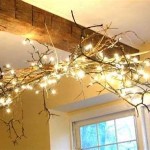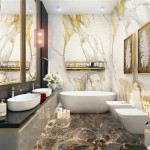Civil Wedding Decoration Ideas: Creating an Elegant and Memorable Ceremony
A civil wedding ceremony provides a simple yet elegant alternative to a traditional religious wedding. The focus shifts from religious traditions to the legal union of two individuals, offering greater flexibility in terms of location, vows, and overall ceremony design. Decorating a civil wedding ceremony space allows couples to personalize the event and reflect their individual style, creating a memorable experience for themselves and their guests. Effective decoration transforms a standard registry office or chosen venue into a warm, inviting, and celebratory atmosphere.
The choice of decoration should consider various factors, including the size and layout of the venue, the desired ambiance, and the couple's personal preferences. A well-thought-out decoration plan contributes significantly to the overall aesthetic of the wedding and enhances the photographs and memories of the day. This article explores several key areas to consider when planning civil wedding decorations, offering practical ideas and suggestions to create a beautiful and personalized ceremony.
Venue Assessment and Space Optimization
Before any decorations are purchased or arrangements are made, a thorough assessment of the venue is crucial. This assessment should include measuring the space, noting existing architectural features, and identifying any limitations or restrictions imposed by the venue management. Understanding the space allows for a strategic approach to decoration, maximizing its impact while minimizing potential challenges.
Consider the lighting situation within the venue. Natural light is ideal, but if the space relies heavily on artificial lighting, plan accordingly. Soft, warm lighting can create a more romantic and intimate atmosphere. Uplighting, strategically placed behind floral arrangements or architectural features, can add depth and dimension to the space. In contrast, harsh fluorescent lighting should be avoided or softened with diffusers or alternative light sources.
The existing décor of the venue should also be taken into account. If the venue has strong colors or distinctive features, the decorations should complement these elements rather than clash with them. For example, a room with a neutral color palette offers greater flexibility in terms of color choices for floral arrangements and other decorative items.
Space optimization is particularly important in smaller venues. Decorations should be carefully selected to avoid overcrowding the space or obstructing walkways. Consider using vertical space to your advantage, such as hanging floral arrangements or banners. Mirrors can also be used to create the illusion of more space. In larger venues, decorations can be used to define specific areas, such as the ceremony area, the waiting area, and the reception area.
Floral Arrangements and Greenery
Floral arrangements are a classic and versatile choice for civil wedding decorations. They add color, texture, and fragrance to the ceremony, creating a visually appealing and welcoming atmosphere. The type of flowers chosen, the style of the arrangements, and the placement of the flowers can all contribute to the overall aesthetic of the wedding.
The choice of flowers should reflect the couple's personal preferences and the overall theme of the wedding. Popular choices include roses, lilies, hydrangeas, and orchids. Seasonal flowers are often more affordable and readily available. Consider the color palette of the wedding when selecting flowers. Neutral colors, such as white and cream, are elegant and timeless, while bolder colors can add a vibrant and modern touch.
The style of the floral arrangements can range from simple and understated to elaborate and dramatic. Small, delicate bouquets can be placed on tables or chairs, while larger arrangements can be used to frame the ceremony area. Consider using floral arches or backdrops to create a focal point for the ceremony. Cascading floral arrangements can add a touch of romance and elegance.
Greenery is an excellent addition to floral arrangements or can be used as a standalone decorative element. Greenery adds texture and depth to the decorations and can create a more natural and organic feel. Popular choices for greenery include eucalyptus, ivy, and ferns. Greenery can be used to create garlands, wreaths, or even entire walls of foliage.
Consider using non-floral elements in the arrangements, such as branches, feathers, or dried flowers. These elements can add visual interest and texture to the decorations and can be particularly effective for weddings with a rustic or bohemian theme. The use of reusable silk flowers is also an option, providing a sustainable and cost-effective solution without sacrificing aesthetic appeal. Silk flowers have improved significantly in quality, offering realistic and beautiful alternatives to fresh blooms.
Personalization and Unique Touches
Adding personal touches to the decorations is crucial for creating a wedding that truly reflects the couple's individuality. These personal elements make the ceremony more meaningful and memorable for both the couple and their guests. These can range from incorporating hobbies to displaying meaningful photographs.
Photographs are a powerful way to personalize the ceremony space. Displaying photos of the couple throughout their relationship helps to tell their story and share their journey with their guests. Photos can be displayed in frames, on easels, or strung along garlands. Consider creating a photo booth with props for guests to take fun and memorable pictures.
Incorporating elements that reflect the couple's hobbies or interests can add a unique and personal touch to the decorations. For example, if the couple enjoys traveling, they could display maps or globes as part of the decorations. If they are passionate about music, they could incorporate musical instruments or sheet music. If they enjoy reading, they could display books or quotes from their favorite authors.
Consider incorporating handmade elements into the decorations. Handmade decorations add a personal touch and can be a fun and creative way to involve friends and family in the wedding preparations. Examples include handmade banners, centerpieces, or favors. These touches not only enhance the décor but also represent the effort and love invested in the event.
Personalized signage is another way to add a unique touch to the ceremony. Signs can be used to welcome guests, direct them to different areas, or display the couple's names or a special message. Signs can be made from a variety of materials, such as wood, chalkboard, or metal. The font and style of the signage should complement the overall theme of the wedding.
Beyond these tangible elements, the choice of music and the selection of readings contribute significantly to the personalized atmosphere. Carefully curated music reflects the couple's tastes and sets the tone for the ceremony. Readings, whether poems, excerpts from favorite books, or personal anecdotes, add depth and meaning to the proceedings.
In conclusion, creating an elegant and memorable civil wedding ceremony involves careful planning, attention to detail, and personal touches. From assessing the venue and optimizing the space to selecting floral arrangements and incorporating personal elements, each aspect of the decoration contributes to the overall aesthetic and atmosphere of the wedding, resulting in a meaningful and personalized event.

Great Ideas For A Civil Wedding Blog Higarnovias

Diy Decoration For Civil Wedding Pinoy Decor

Great Ideas For A Civil Wedding Blog Higarnovias

Civil Wedding Decor

50 Stunning Wedding Backdrop Design Ideas That Are Truly Enchanting

Simple Civil Wedding Decoration Es

Sweetheart Table Wedding Decorations

Great Ideas For A Civil Wedding Blog Higarnovias

90 Wedding Reception Decoration Ideas That Are Straight Dreamy

Pin De Lizzette Mendez En Bodas Decoracion Sencillas Adornos Para Boda Decoraciones Modernas
Related Posts







